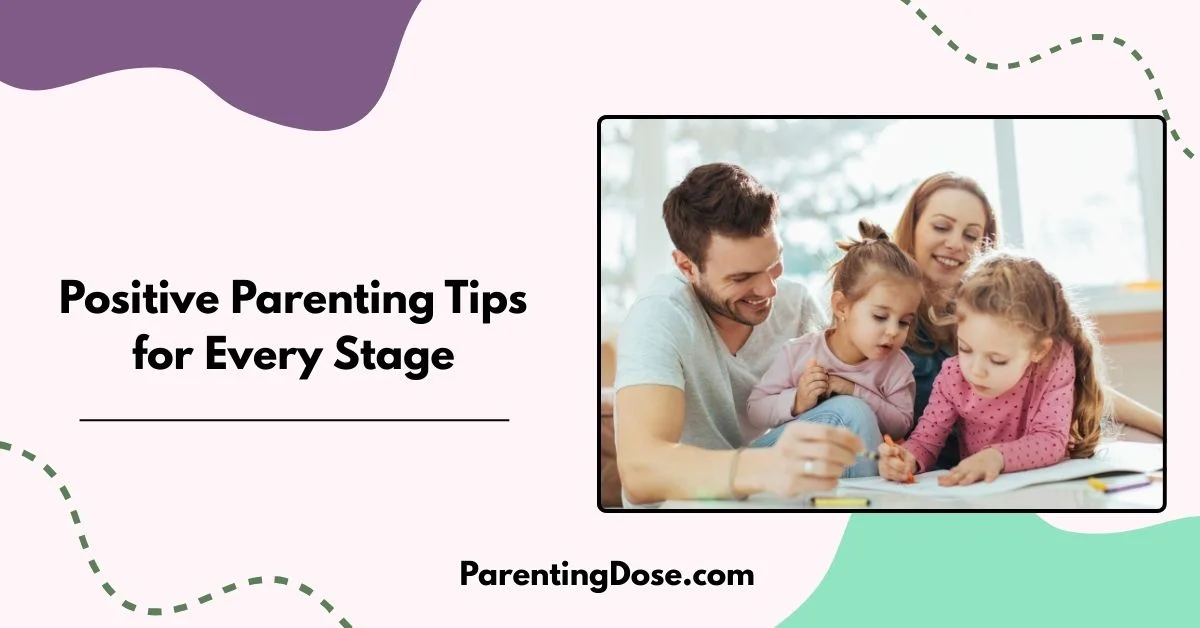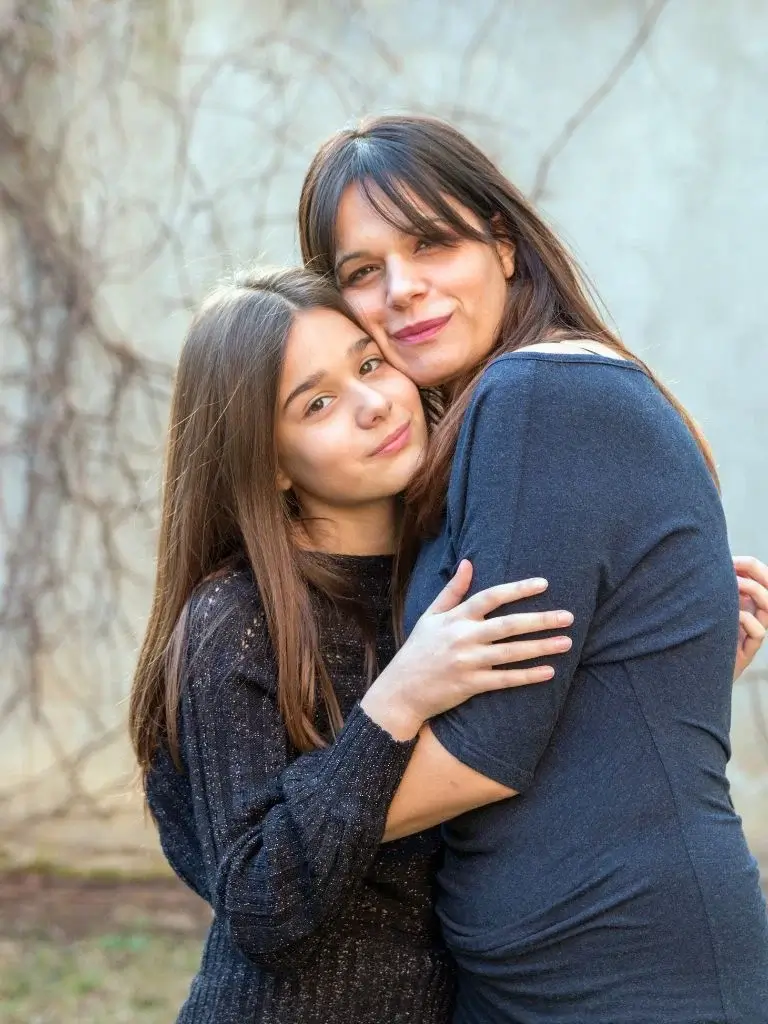Let me paint a picture you probably know all too well.
It’s 7:45 a.m. Your toddler just dumped oatmeal on the dog. The baby’s diaper exploded. You haven’t had your coffee yet, and you’re already feeling like you’re ten steps behind. You glance at the clock and think, How is it not bedtime yet?
I am you. And I want to tell you something that took me way too long to believe: you can parent with patience and love without losing yourself in the chaos.
These positive parenting tips aren’t just pulled from a textbook or a glossy magazine—they’re hard-won lessons from the messy, magical world of raising little humans.
Whether you’re deep in the toddler trenches, navigating preschool power struggles, or parenting tweens and teens, these tips are here to help you find more peace, more connection, and (yes) even a little more joy.
But First, What Is Positive Parenting?
Positive parenting is all about mutual respect, empathy, and connection. It’s not about being a perfect parent (spoiler: that doesn’t exist), but about choosing strategies that help your child feel safe, seen, and supported—even during meltdowns.
Instead of controlling behavior through fear or punishment, positive parenting focuses on:
- Teaching rather than punishing
- Setting clear, consistent boundaries
- Encouraging emotional intelligence
- Building trust and open communication
And the best part? It works long-term. Research shows kids raised with positive discipline grow into more emotionally resilient, confident, and cooperative adults.
Toddler Years (Ages 1-3): Surviving with Sanity and Connection
Toddlers are all emotion and impulse. They aren’t misbehaving—they’re exploring.
My son once cried for 30 minutes because his banana “broke.” I used to rush to fix it, but then I learned to pause, crouch down, and say, “You’re upset about your banana, huh?” That simple act of naming the feeling made all the difference.
We also embraced routines like our lives depended on it (because some days, they did). A basic visual schedule helped him feel more in control, which meant fewer power struggles and more calm.
What helped most:
- Offering simple choices: “Do you want to wear the dinosaur shirt or the rocket one?” This give them a sense of independance.
- Celebrating small wins: “You put your shoes on all by yourself!”
- Embracing their big feelings without trying to fix everything
Preschoolers (3–5 Years): Independence with a Side of Sass
Preschoolers want to do everything themselves, even if it means pouring milk all over the floor.
Instead of jumping in to prevent the mess, I learned to coach from the sidelines. “Oops, that spilled—can you grab a towel and help clean it up?” That shifted our home from punishment to partnership.
We role-played kindness using stuffed animals, told bedtime stories that gently taught empathy, and leaned into natural consequences without shame.
They want to feel powerful—so give them meaningful ways to help.
- “Can you be my helper and stir the pancake batter?”
- “Let’s race to see who can pick up the most blocks!”
And always, always, validate those big feelings before jumping to fix them.
School-Age Kids (6–9 Years): The Curious Builders
These years are filled with questions, jokes, and a growing desire to contribute.
My daughter started asking things like, “Why do some people believe different things?” and “Why can’t I have candy for breakfast?”
Instead of shutting her down, we got curious together. “That’s a great question. Let’s figure it out.”
Giving her small responsibilities—like feeding our cat or packing her snack—boosted her confidence. And we began using tools like a “problem-solving corner” where we worked together through challenges instead of resorting to punishment.
What we practiced:
- Active listening without interrupting
- Daily check-ins (while driving or during bedtime)
- Explaining the “why” behind rules
Preteens (10–12 Years): The In-Between Bridge
They’re not quite teens, but they’re so not little kids anymore.
This stage is all about identity and belonging. My son started caring more about what friends thought than what I said—and that stung a little.
Instead of clinging tighter, I gave him more room to grow. That meant letting him make more decisions, even if it meant letting him stumble a bit.
We had short, casual chats about body changes, emotions, online safety—all with the goal of keeping the conversation open, not awkward.
Things that helped:
- Respecting privacy but staying involved
- Asking open-ended questions like, “What was something surprising today?”
- Letting them voice opinions—even when you disagree
Teens (13–18 Years): The Letting Go Years
Teenagers crave freedom but still need your anchor. The trick is loosening the rope without cutting the connection.
There were moments I was tempted to lay down the law. But I saw better results when I leaned in with curiosity instead of control.
We set clear expectations around curfews, tech use, and grades—but we set them together. This collaborative approach turned battles into discussions (most of the time).
Talk about tough stuff—mental health, peer pressure, relationships—and always end with, “You can tell me anything. I’m on your side.”
Things I swear by:
- Keeping calm when they aren’t
- Respecting their independence while staying available
- Being honest about your own mistakes and growth
Sanity-Saving Habits for Every Stage
Because let’s face it—there are days when love and logic aren’t enough, and you just need survival tools:
- Transition playlists to make leaving the park or cleaning up smoother
- Quiet time baskets for overwhelmed afternoons
- Snack stations in the car or kitchen for meltdown prevention
- Sticky notes with reminders like “Respond, not react” or “Pause. Breathe. Connect.”
They might seem small—but they kept me grounded when everything else felt upside down.
Final Thoughts: You’re Doing Better Than You Think
Positive parenting isn’t about having all the answers. It’s about showing up with love, again and again.
Every meltdown soothed, every boundary held with kindness—that matters.
You’re doing an incredible job, mama.





